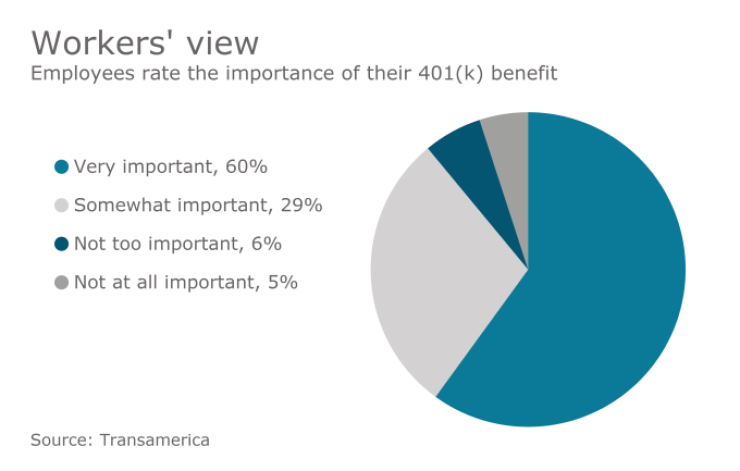Average 401(k) and IRA balances reached record levels in the third quarter of 2017, climbing 10% over last year, according to Fidelity Investments’
The average 401(k) balance was $100 shy of the $100,000 mark and the average IRA balance jumped to $103,500, driven by a strong stock market and plan participants contributing more to their retirement savings.
“That’s great news. Obviously a strong stock market has driven a lot of that. When you look at the percent of account balance growth due to the market compared to contributions over the past year, largely, 75% is due to market action and 25% to contributions,” says Jeanne Thompson, senior vice president for Fidelity Investments. “People who invested in other than stable value or cash have seen their accounts grow.”

Fidelity found that the average 401(k) contribution rate reached 8.5% in the third quarter; the highest percentage in nearly a decade, and 29% increased their contribution rate over the last year. For IRAs, savers increased their contributions by 12% and Roth IRA contributions increased by 13%, according to Fidelity.
The average 401(k) savings rate is 12.9%, if both employee and employer contributions are included.
“We’re close to the threshold of breaking 13%. That’s as high as we’ve ever seen it, which is encouraging to us,” Thompson says.
A big reason for the improvement in savings totals is plan design changes that take some of the decision making out of the hands of employees, like automatic enrollment, automatic escalation and qualified default investment alternatives, which include target-date funds. Companies are beginning to auto enroll employees at higher percentages as well. In the past, 3% was the norm, but now, many employers are auto enrolling their people between 4% and 6%.
Companies are beginning to auto enroll employees at higher percentages as well. In the past, 3% was the norm, but now, many employers are auto enrolling their people between 4% and 6%.
Target-date funds are having a major impact, particularly on the younger generations, Thompson says. Of people in their 20s who hold accounts with Fidelity Investments, 74% are holding 100% of those assets in a target-date fund. Sixty-seven percent of millennials are holding 100% of their assets in target-date funds and overall, 48% of people are holding 100% of their assets in target-date funds, up from 30% in 2012, Thompson says.
Prior to the Pension Protection Act of 2006, most people defaulted their investments into stable value funds, cash holdings or company stock, she says.
Every generation is benefiting from these changes, Thompson says. The average account balance for baby boomers who have saved continuously for 15 years is $411,700; for Generation X, that figure is $318,600; and for Millennials, $117,400.
“We can see the longevity of investing of savings over time is starting to push higher account balances than we have historically seen,” Thompson says.
The population of Fidelity customers who have saved continuously for that long is small, says Fidelity, with only 347,000 baby boomers, 243,000 GenXers and 1,000 millennials.
Health savings accounts are another savings vehicle that are pushing overall retirement savings higher.
Many employers are moving to high-deductible health plans with an HSA component, but a lot of them were worried that offering an HSA with their 401(k) would reduce employee savings rates.
“We are not seeing that. When you look at individuals with both a 401(k) and HSA, they have higher savings rates. The average is 9.9% vs. 8.5% for those with just a 401(k),” Thompson says. “We see that across all income levels. They are saving at higher rates than just a 401(k). It hasn’t impacted the 401(k) savings rate.”
One of the biggest challenges facing health savings accounts is that many people think they are a use it or lose it option, she says. They don’t realize that it is a savings account and brokerage account at the same time. If the amount of money contributed during the year is not used up, that money can be invested for future health care expenses and the money comes out tax free, she says.





